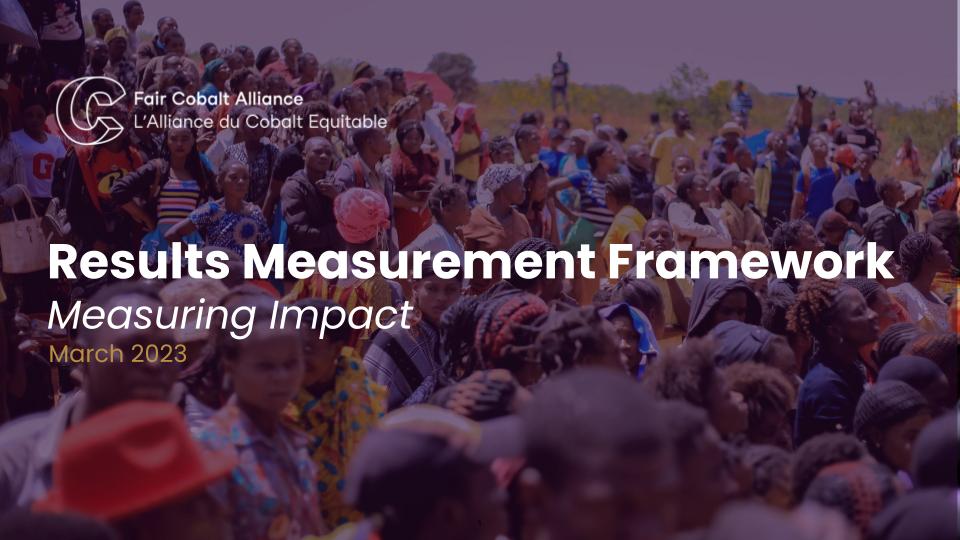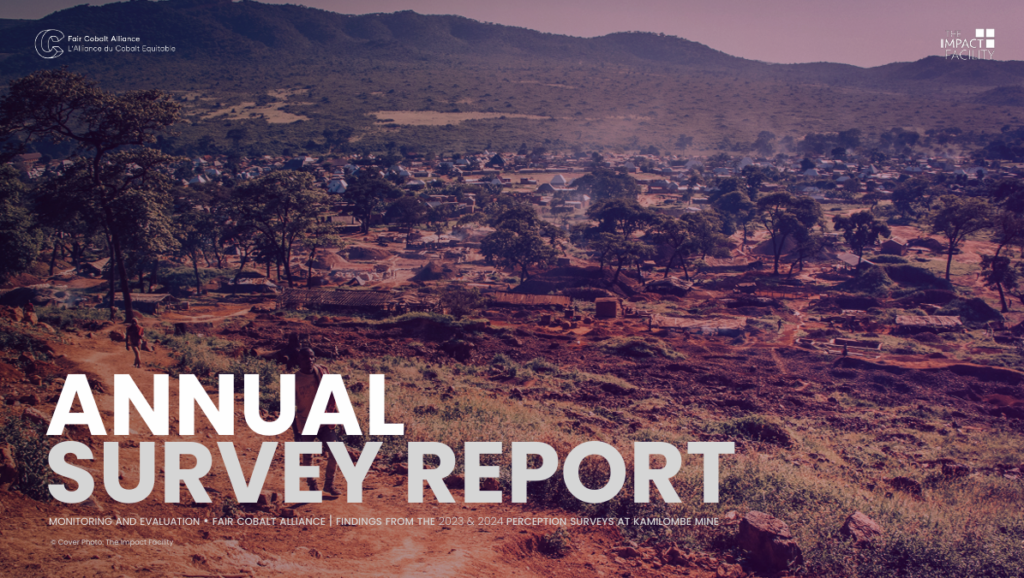Measuring our Impact
Our goal is to have a measurable impact on the mining communities we engage. We continuously measure the progress of our programmes to ensure that we maximise our reach and the social return on our investment and grant capital.
How we define success
Our success is measured by our ability to enable broad livelihood improvements in mining communities.
How we operationalise success
We leverage the power of multi-stakeholder partnerships to deliver lasting impact for cobalt-rich communities.
How we enable Impact

Value Chain Participation
How we deliver impact
Safe & Fair Working Conditions
Child Labour Prevention & Remediation
Economic Resilience
How we measure Impact

The FCA Monitoring & Evaluation Framework
We utilise result chains to outline logical links between our key activities and outputs, outcomes and eventually impact.
These are our key metrics to allow us to measure shorter- and longer-term change from our specific activities.
Access our Framework HereKnowledge Repository

Open Data Repository The Annual Survey of the FCA (1st Ed.)
Every year, we conduct a statistically relevant perception survey study at Kamilombe to understand changes in trends, contextualise impact, and inform our priorities.
We are committed to open source data sharing. Accompanying the Report, we also share the datasets, codes and questionnaires for any interested researcher to use.
Access our Annual Survey Report (1st Ed) Here